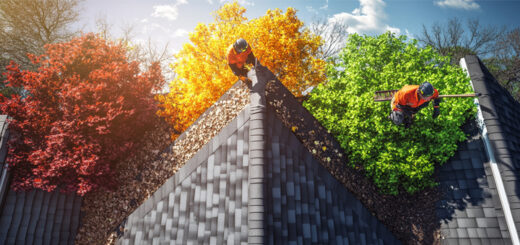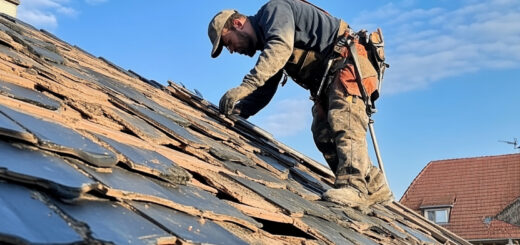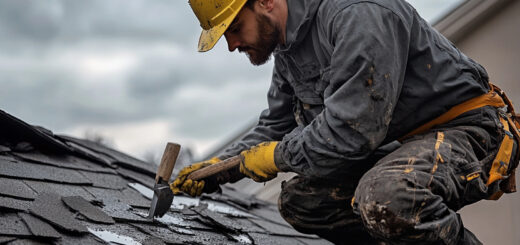How to Rejuvenate Your Roof
Why Rejuvenating Your Roof is Essential
Maintaining the integrity of your roof is a crucial aspect of homeownership that often goes overlooked. Rejuvenating your roof can offer numerous benefits, making it an essential task for any responsible homeowner. One of the primary reasons to rejuvenate your roof is to extend its lifespan. Regular roof maintenance and timely restoration can prevent minor issues from escalating into major problems, thereby prolonging the life of your roofing materials.
Moreover, a well-maintained roof significantly improves home value. Potential buyers are more likely to invest in a property that has been meticulously cared for, including its roofing system. Roof restoration not only enhances the aesthetic appeal but also assures future owners that they won’t face imminent roofing issues.
Additionally, rejuvenating your roof can provide immediate practical benefits such as improved energy efficiency and better protection against harsh weather conditions. By addressing wear and tear early on, you ensure that your home remains safe and comfortable throughout the year.
In summary, taking steps to rejuvenate your roof through regular maintenance offers long-term advantages like extending its lifespan and boosting property value while providing immediate improvements in functionality and appearance.
Signs It’s Time to Rejuvenate Your Roof
A roof is one of the most critical components of your home, providing protection and comfort. However, over time, it can deteriorate and require rejuvenation. Recognizing the signs of an aging or damaged roof early can prevent costly repairs down the line. Here are some key roof inspection signs that indicate it might be time to rejuvenate your roof.
One of the most apparent aging roof symptoms is damaged shingles. Shingles that are cracked, curling, or missing altogether are clear indicators that your roof’s integrity is compromised. Damaged shingles not only affect the aesthetic appeal but also expose your home to potential water damage.
Leaking roof indicators should never be ignored. Water stains on ceilings or walls, damp spots in the attic, and mold growth inside your house signal a leaking roof that needs immediate attention. Such leaks can lead to structural damage if not addressed promptly.
Moss and algae growth on your rooftop is another sign that rejuvenation might be necessary. While they might seem harmless at first glance, moss and algae retain moisture against the surface of your shingles, accelerating their deterioration and potentially leading to leaks.
In conclusion, regular inspections for these signs—damaged shingles, leaking indicators, and moss or algae growth—can help you determine when it’s time to rejuvenate your roof. Taking proactive measures ensures longevity and maintains the safety and comfort of your home.
The Best Methods for Roof Rejuvenation
When it comes to maintaining the longevity and appearance of your roof, rejuvenation is key. There are several effective methods for roof rejuvenation that homeowners can consider.
One of the primary techniques is thorough roof cleaning. Various roof cleaning techniques, such as pressure washing or chemical treatments, help remove moss, algae, and debris that can deteriorate shingles over time. It’s essential to choose the right method based on your roof type to avoid any damage.
The shingle restoration process involves treating existing shingles with specialized products that restore their flexibility and waterproofing properties. This not only extends the life of your shingles but also enhances their appearance.
While DIY rejuvenation might seem like a cost-effective solution, it’s important to weigh it against professional roof rejuvenation services. Professionals have access to high-quality materials and equipment, ensuring a more thorough and long-lasting result. Additionally, they possess the expertise to identify underlying issues that may not be apparent during a DIY project.
Ultimately, whether you opt for DIY or professional rejuvenation depends on your budget and comfort level with tackling such projects. However, investing in professional services often provides peace of mind and superior outcomes in the long run.
Choosing the Right Products for Roof Restoration
When it comes to roof restoration, selecting the right products is crucial for ensuring long-lasting results and maintaining the structural integrity of your home. One of the key considerations is choosing appropriate roof coating products. These coatings serve as a protective layer, shielding your roof from harsh weather conditions and extending its lifespan. It’s important to select a high-quality product that suits the specific material of your roof, whether it’s asphalt shingles, metal, or tile.
Another vital aspect is exploring rejuvenation treatments for roofs. These treatments can breathe new life into aging roofs by restoring their original appearance and functionality. They often involve cleaning, repairing minor damages, and applying restorative coatings that enhance durability.
For those who prioritize environmental sustainability, eco-friendly roof products are an excellent choice. These products are designed to minimize environmental impact while providing effective protection. They often contain fewer harmful chemicals and promote energy efficiency by reflecting more sunlight away from the roof surface.
Lastly, don’t overlook the importance of protective sealants for shingles. Sealants act as a barrier against moisture penetration and help prevent leaks and water damage. By applying a reliable sealant, you can significantly extend the service life of your shingles and maintain their aesthetic appeal.
In summary, choosing the right products for roof restoration involves considering factors such as compatibility with roofing materials, rejuvenation capabilities, environmental impact, and protective qualities. By making informed decisions in these areas, you can ensure a successful restoration project that safeguards your home for years to come.
The Cost of Rejuvenating Your Roof: What to Expect
When considering the rejuvenation of your roof, it’s essential to understand the potential costs involved. Roof rejuvenation can be a cost-effective alternative to a full replacement, but it’s important to have a clear picture of the expenses you might incur.
A detailed roof rejuvenation cost breakdown typically includes several components. First, there’s the inspection fee, which ensures that your roof is suitable for rejuvenation rather than needing replacement. Following this, labor costs will vary depending on the complexity and size of your roof. Material costs are another significant factor; quality sealants and coatings used in rejuvenation processes can impact overall pricing.
Budget-friendly options for restoring roofs are available and often involve choosing less expensive materials or opting for partial repairs rather than full-scale projects. It’s crucial to balance these budget considerations with long-term benefits—sometimes investing slightly more upfront can lead to better durability and fewer maintenance issues down the line.
A thorough cost-benefit analysis of rejuvenating vs replacing a roof reveals that while initial expenses for rejuvenation are generally lower, one must consider longevity and performance. Rejuvenated roofs can extend the life of your existing structure by several years at a fraction of the replacement cost. However, if your roof is nearing the end of its lifespan or has significant damage, replacement might offer more value in terms of long-term durability and peace of mind.
Understanding these factors will help you make an informed decision about whether roof rejuvenation aligns with your financial goals and structural needs.
Preventive Maintenance Tips to Keep Your Roof in Top Condition
Maintaining your roof is crucial to ensure its longevity and effectiveness. By following regular roof maintenance tips, you can prevent future damage and costly repairs. Here are some essential steps to include in your seasonal roofing care checklist:
- Regular Inspections: Conduct a thorough inspection of your roof at least twice a year, ideally in the spring and fall. Look for signs of wear and tear such as missing or damaged shingles, cracks, or any other visible issues.
- Clean Gutters and Downspouts: Ensure that gutters and downspouts are free from debris like leaves and twigs. Blocked gutters can cause water to back up and seep under the roofing materials, leading to leaks.
- Trim Overhanging Branches: Trees with branches that hang over your roof can cause damage during storms or high winds. Trim these branches regularly to prevent them from scratching or falling on the roof.
- Check for Moss and Algae Growth: Moss and algae can retain moisture against the roofing material, leading to deterioration over time. Use a moss killer or hire a professional service to keep these growths at bay.
- Inspect Flashing: Flashing around chimneys, vents, skylights, and other protrusions should be checked for gaps or signs of rusting as these areas are prone to leaks if not properly sealed.
- Address Minor Repairs Promptly: Small issues like loose shingles or minor leaks should be repaired immediately before they escalate into more significant problems requiring extensive repairs.
By adhering to these preventive maintenance tips and keeping a detailed seasonal roofing care checklist, you can significantly extend the life of your roof while preventing future damage with proper upkeep. Need to Replace the Roof?













